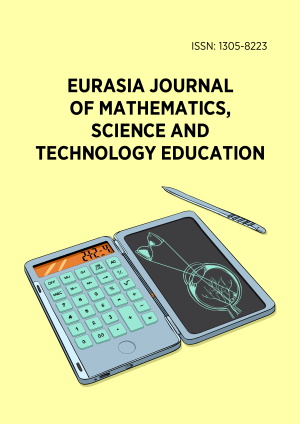Abstract
This study assessed the spatial and geometric reasoning skills of primary school teachers and examined the relationship between these constructs. Participants were enrolled in a B.Ed. distance program at an education degree college in Myanmar. Results showed that male teachers outperformed females on the mental rotation test, though no significant gender differences were found in geometric reasoning. Younger teachers (aged 25-30) scored higher than older teachers (aged 46-55) in the geometric reasoning test. Teachers with mathematics and chemistry degrees performed better than those from other disciplines. Teachers struggled with tasks involving nets, three-dimensional (3D) shapes representation, rotations, and folding/unfolding solids. A moderate positive correlation (r = 0.47) was found between spatial and geometric reasoning. Matching edges and faces of 3D solids and measurement tasks were strong predictors of teachers’ spatial reasoning. The findings imply that the teachers need to be sufficiently engaged in spatial reasoning activities.
License
This is an open access article distributed under the Creative Commons Attribution License which permits unrestricted use, distribution, and reproduction in any medium, provided the original work is properly cited.
Article Type: Research Article
EURASIA J Math Sci Tech Ed, Volume 21, Issue 8, August 2025, Article No: em2684
https://doi.org/10.29333/ejmste/16718
Publication date: 01 Aug 2025
Article Views: 2349
Article Downloads: 5722
Open Access References How to cite this article
 Full Text (PDF)
Full Text (PDF)